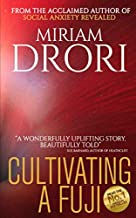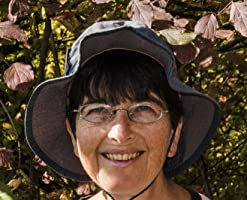Getting Cultivating A Fuji into the World by Miriam Drori
- authorvalpenny
- Feb 8, 2023
- 4 min read
It is with great pleasure that I welcome bestselling author, Miriam Drori to the blog today to talk about her experiences of her getting her novel Cultivating a Fuji published. Her experiences underline the struggles and self-doubt that many writers have to overcome to become published authors.
I wasn’t new to publishing when Cultivating a Fuji (CAF) was finally ready to come out in 2019. My debut novel, Neither Here Nor There had been accepted by Crooked Cat Books, who also published my non-fiction book, Social Anxiety Revealed. I could have submitted CAF immediately to Crooked Cat, because Crooked Cat knew and appreciated my writing.
But – I’m blushing at the thought of saying this, but it happens to be true – every time I read through the “finished” product – “finished” is in quotes because each time, I tweaked the text a little – I realised what a special novel this is. It tells a unique story in a unique way, and I’m very proud of it. My impression was that it deserved more than Crooked Cat. That’s not to denigrate Crooked Cat (now Darkstroke Books) in any way, but Crooked Cat was a small publishing company that didn’t have the reach of the large ones, and I wanted more people to read this book.

I sent it out and got nowhere, and in the meantime I took a course run by one of the big literary agencies. What I learned was that agents won’t accept novels that break the rules, especially debut novels (and mine would have been considered a debut).
Yes, Cultivating a Fuji breaks rules. No, I didn’t decide on a whim to break them. I considered each one carefully and made my decisions based on the needs of this particular story. These are the rules that CAF breaks (or almost breaks):
1. The novel must begin with action.
2. The story must begin from the point of view of the main character.
3. Minor characters don’t have points of view.
4. If a character appears in only one scene of the novel, that character can’t have any backstory at all.
5. There must be no head-hopping.
I think the beginning of CAF is interesting and can draw the reader in, but it’s gentler than a big bang – more of a tap, I would say.
In order to avoid breaking rule 1, I considered calling the first scene the prologue, but then I would have come against rule 2, because the story proper begins from the points of view of several characters who are not the main character. This was important to me. I wanted readers to view him from the outside before boring to the inside to see what really makes him tick. Like all the decisions regarding the book, I didn’t take this one lightly.
There are characters who have points of view despite being minor. Some of those appear only once in the novel, yet they have backstories. Why? Because their opinions of the main character are just as relevant. And because I wanted readers to realise that the characters aren’t bad, but have their own issues to contend with, and they don’t have the space or the experience to understand Martin.
Head-hopping occurs in only one scene, where the points of view of both of the participants, and the differences between them, are important to convey to the reader.
When I realised that, for these reasons, big agents and publishers would never accept CAF for publishing, I stopped sending it out. Fortunately, Crooked Cat had the wisdom to accept it. But Crooked Cat is no longer, and the novel doesn’t fit Darkstroke. When it had to leave Crooked Cat, I self-published it and have now published it again through Ocelot Press, a cooperative of independent authors. My crime novel, Style and the Solitary (the first of a series) is also published through them.

Cultivating a Fuji
Convinced that his imperfect, solitary existence is the best it will ever be, Martin unexpectedly finds himself being sent to represent his company in Japan. His colleagues think it’s a joke; his bosses are certain he will fail. What does Martin think? He simply does what he’s told. That’s how he’s survived up to now – by hiding his feelings.
Amazingly, in the land of strange rituals, sweet and juicy apples, and too much saké, Martin flourishes and achieves the impossible. But that’s only the beginning. Keeping up the momentum for change proves futile. So, too, is a return to what he had before. Is there a way forward, or should he put an end to the search now?
Gradually, as you’ll see when Martin looks back from near the end of his journey, life improves. There’s even a woman, Fiona, who brings her own baggage to the relationship, but brightens Martin’s days. And just when you think there can be no more surprises, another one pops up.
Throughout his life, people have laughed at ‘weirdo’ Martin; and you, as you read, will have plenty of opportunity to laugh, too. Go ahead, laugh away, but you’ll find that there’s also a serious side to all this…
Cultivating a Fuji edition 3 was published on 19th January 2023, and is available from Amazon.

The Author
Miriam Drori, author, editor and social anxiety warrior, worked as a computer programmer and a technical writer before turning her attention to full-time writing. Her novels and short stories cover several genres, including crime, romance and uplit. She has also written a non-fiction book about social anxiety.
Born and raised in London, Miriam now lives in Jerusalem, where her cosy crime mysteries are set. She has travelled widely, putting her discoveries to good use as settings in her writing. Her characters are not based on real people, but rather are formed from an amalgam of the many and varied individuals who have embellished her life.
For more information, visit Miriam’s website.







I love the “rules”!
Thank you so much for publishing my article, Val. 🙂